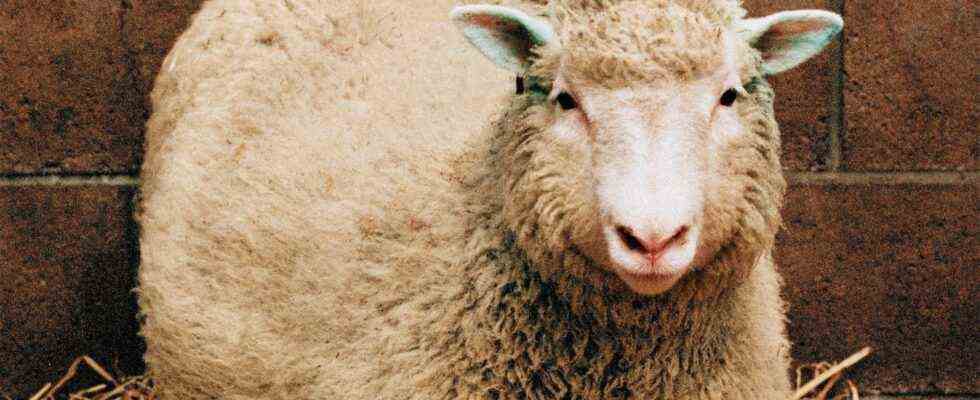Status: 05.07.2021 6:27 a.m.
Clone sheep “Dolly” was born 25 years ago. Today, cloning technology is an important application in animal breeding and medical research.
It was a sensation when the sheep “Dolly” was born in a stable in Scotland on July 5th, 1996: the first mammal to be cloned from a mature cell. Half a year later the news of “Dolly” went around the world. The genetic material for the sheep came from the udder cells of an adult animal. From this, the scientists at the Roslin Institute in Scotland created a cell culture that kept reproducing in the laboratory. Then a nucleus from the cell culture was injected into the egg cell.
The technology is called “core transfer”, colloquially: cloning. Because this is how creatures are created that are genetically identical to an adult or – as with Dolly – an animal that has already died. 277 donor cells were used for the experiment, 29 embryos developed – one survived: Dolly, a genetic copy of a living being that would never have come about naturally. Strictly speaking, she had three mothers: the egg cell came from one, the genetic material from the other, and the third was the surrogate mother in whom the embryo matured.
Afraid of cloned people
The successfully applied cloning technique caused a sensation and sparked discussions around the world. Will the first cloned humans be around soon? Two reproductive medicine specialists in Italy and the United States accepted cloning orders for childless couples, while others stoked fear of the new method: people as spare parts stores or copies of Adolf Hitler.
A religious sect from the United States, the Raelians, claimed to have cloned a human in 2002. But none of this was true or occurred. Nevertheless, Heiner Niemann, former head of the Friedrich Loeffler Institute for Animal Health, thinks that the successful application of cloning technology was a real leap in science. “I would even say that a dogma in biology fell back then.” The researchers turned the biological aging process around: a mature cell became an embryo again. That was previously thought to be impossible.
Molecular biologist Eckhard Wolf: Therapeutic cloning remains difficult.
Image: BR
Cloning Technology Today – Farm Animals and Pets
To date, monkeys, cats, dogs, horses, donkeys, rabbits, sheep, pigs, cows, rats and mice have been cloned. The resulting genetically identical animals are important in animal breeding and science. In this way, cloned offspring of expensive high-performance bulls can deliver any amount of semen while the original bull is no longer alive.
Cloning of pets did not bring the desired success because the cat clones looked very different from the original pet. Today we know the reason for this: The pattern on the fur of cats is created during embryonic development. Coincidences play a bigger role than genetics.
Cloning technology as an opportunity for medicine
Cloning technology is still important today in medicine: The clone calf “Uschi” was created in 1998 at the gene center of the Ludwig Maximilians University in Munich; today, for example, the monecolar biologist Eckhard Wolf clones pigs. The aim is to use the animals to observe how chronic diseases such as diabetes develop and to help improve current therapies. Another application is xenotransplantation, the transfer of animal cells, tissues or organs to humans. Cloned animal cells should be modified in such a way that they are no longer recognized as foreign by the human immune system.
Organs could arise that may at some point be transplanted into patients and are supposed to save human lives. With the heart in particular, the biologist sees a good chance that transmission will soon be possible.
Therapeutic cloning, i.e. obtaining embryonic stem cells, has remained difficult: stem cells have the potential to form tumors that must be prevented. They would be interesting because you can grow different tissues from them, such as heart muscle tissue or nerve cells. Since the cloned stem cells are genetic with the donor organism, an immunological defense reaction would be less likely.
“Dolly” is in the museum today
The clone sheep “Dolly” is now stuffed in the Scottish National Museum. The sheep suffered from arthritis and died at the age of six from a lung disease that was not linked to her “cloning past”. “Dolly” herself gave birth to six lambs – conceived naturally.

